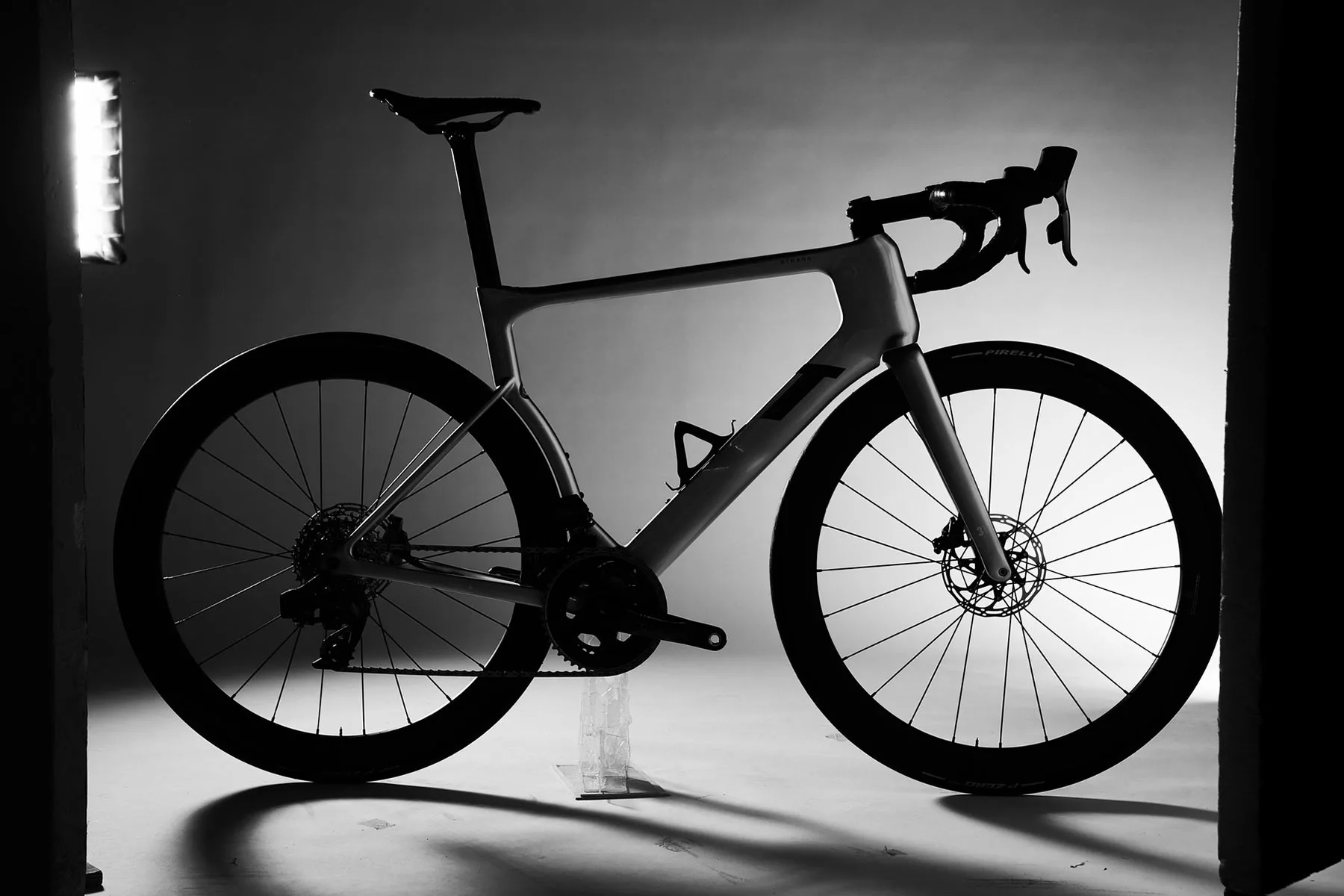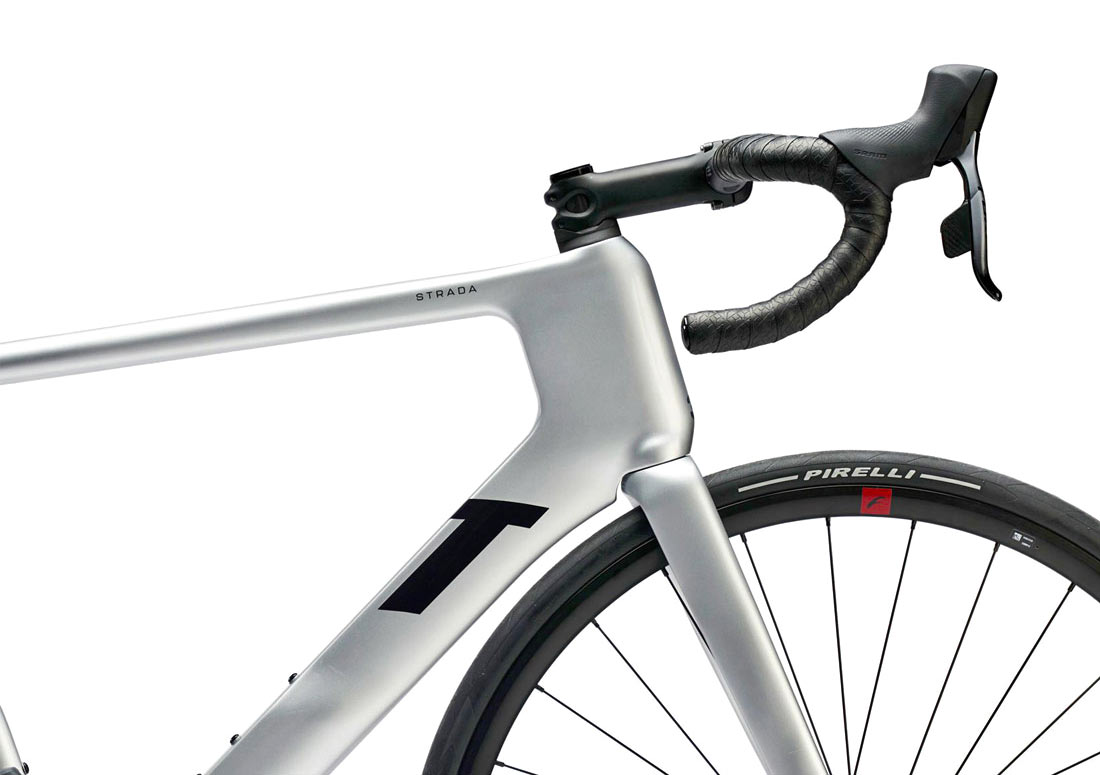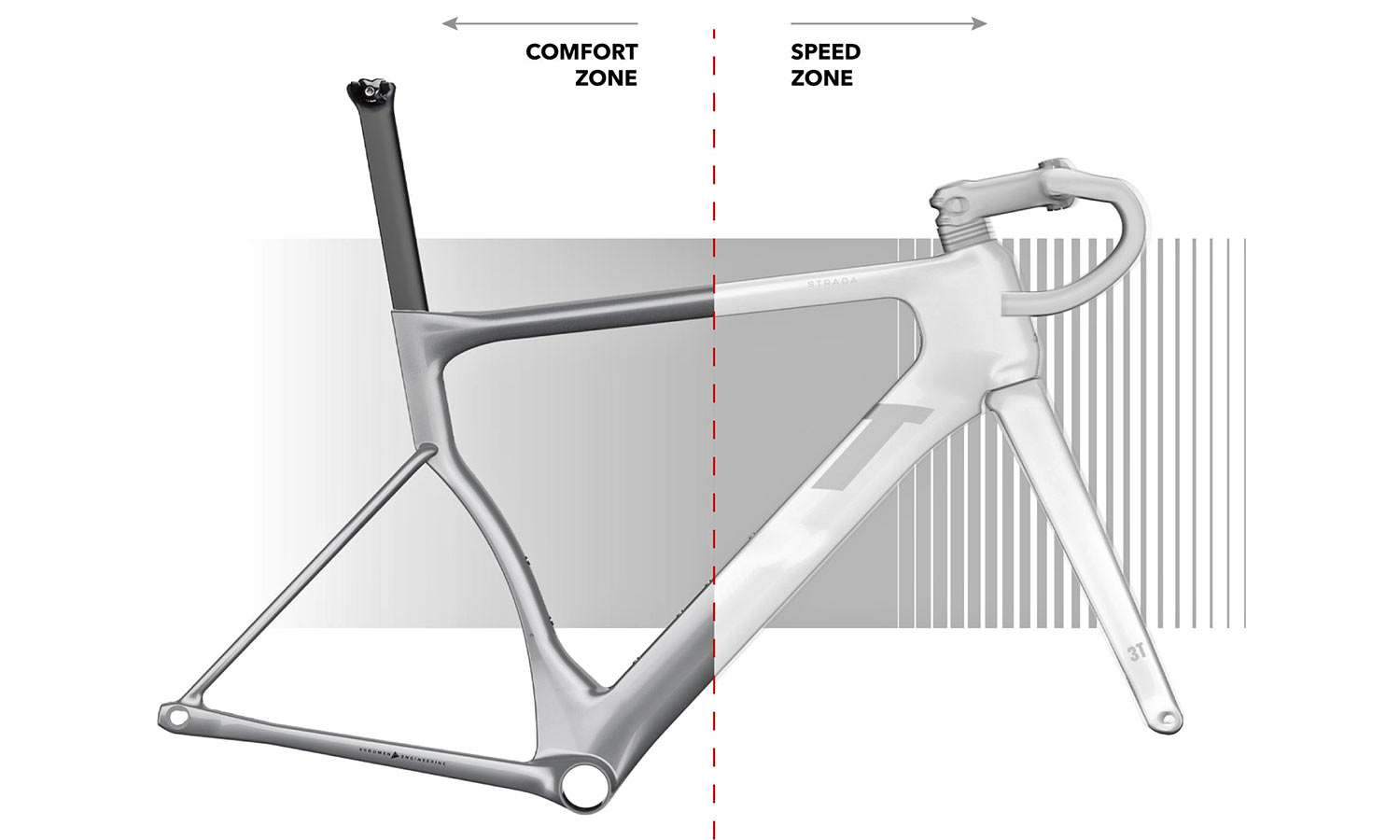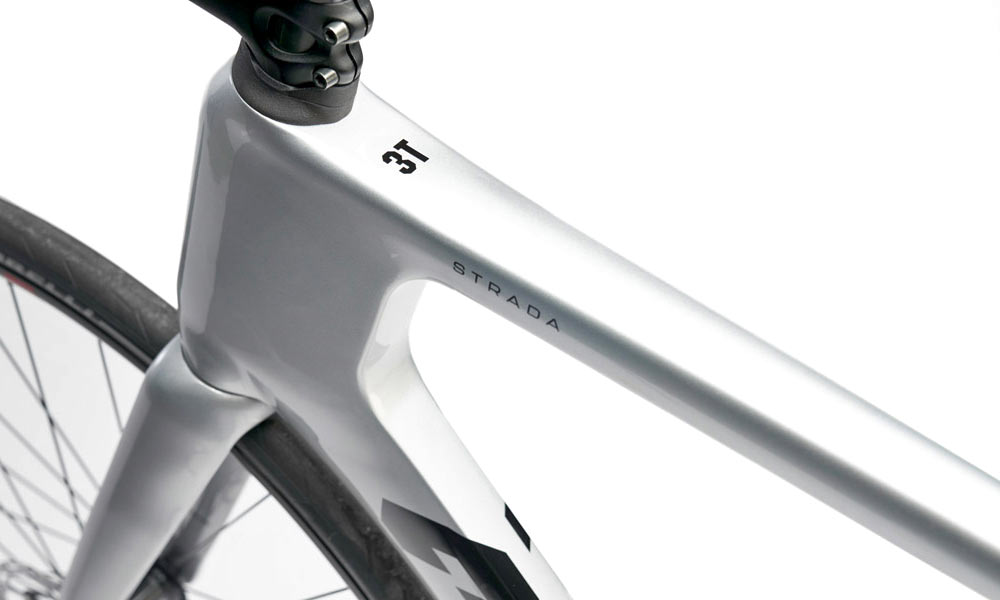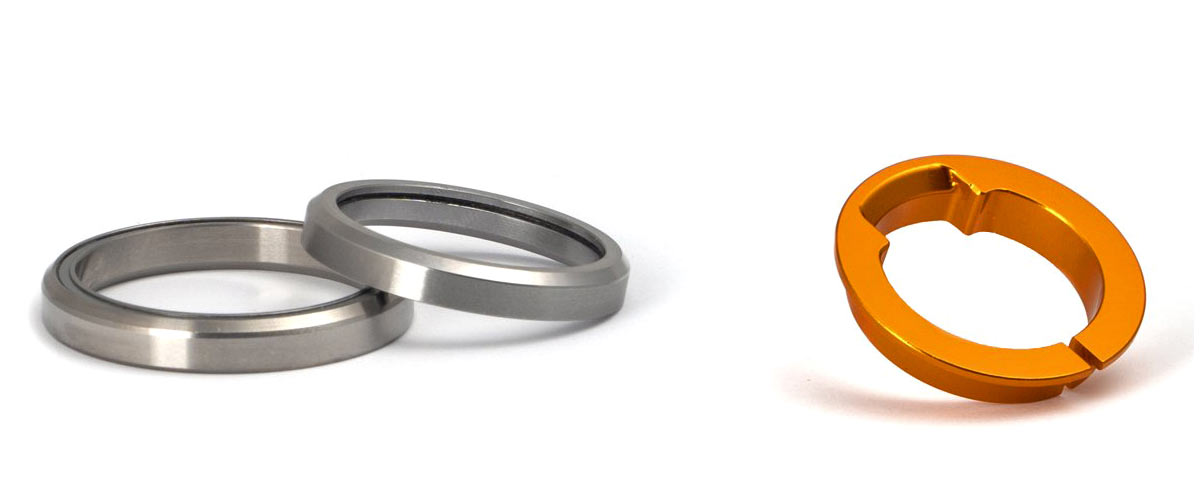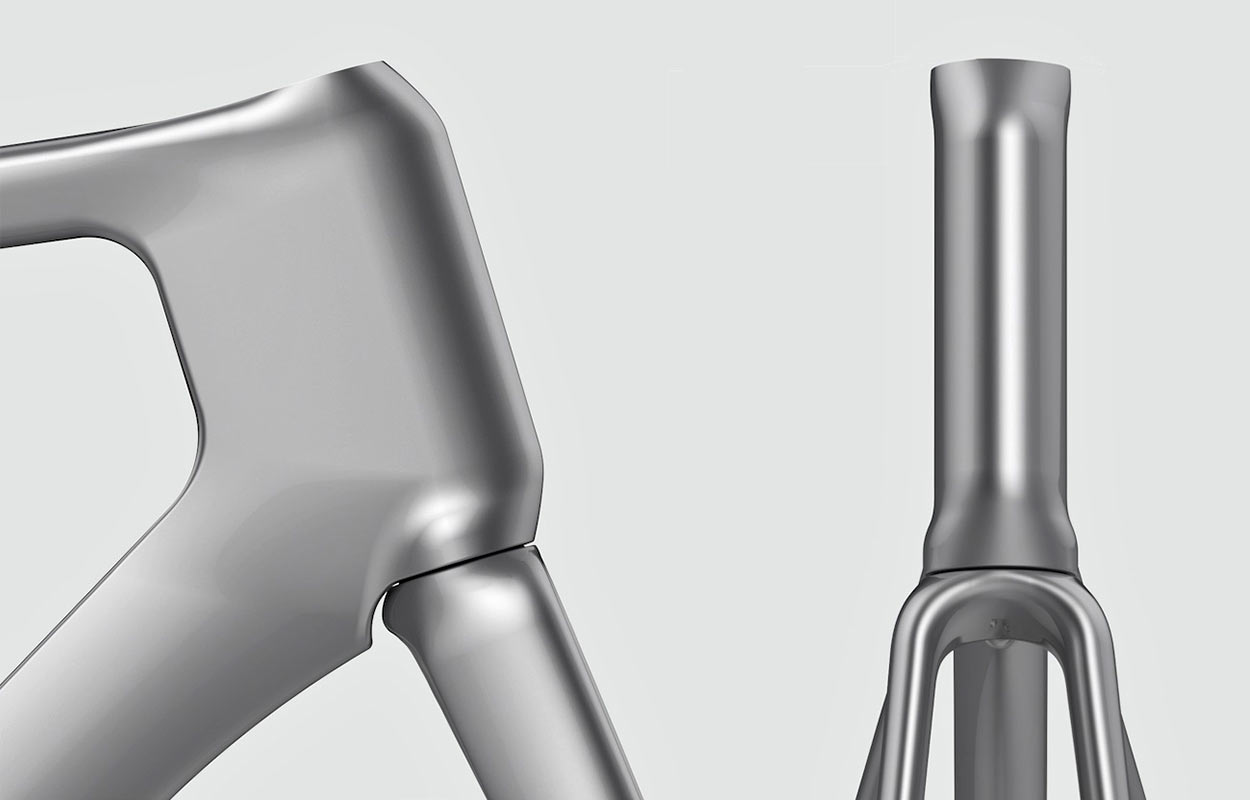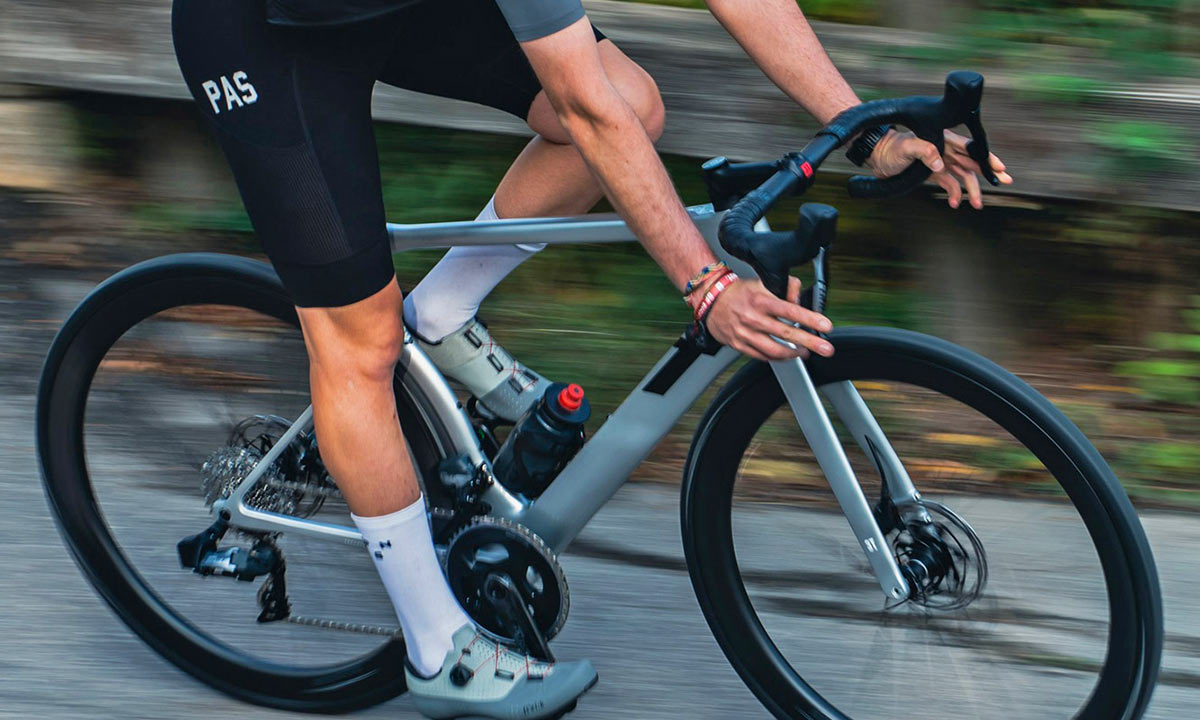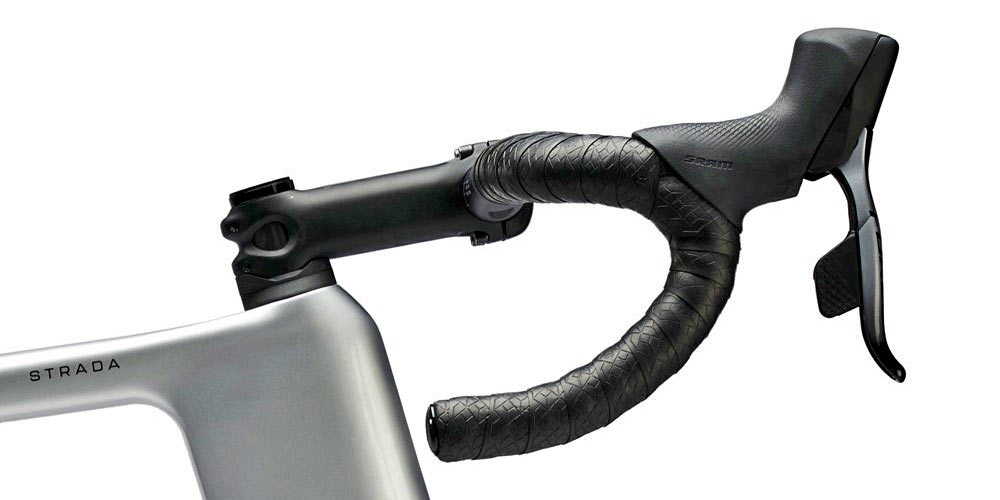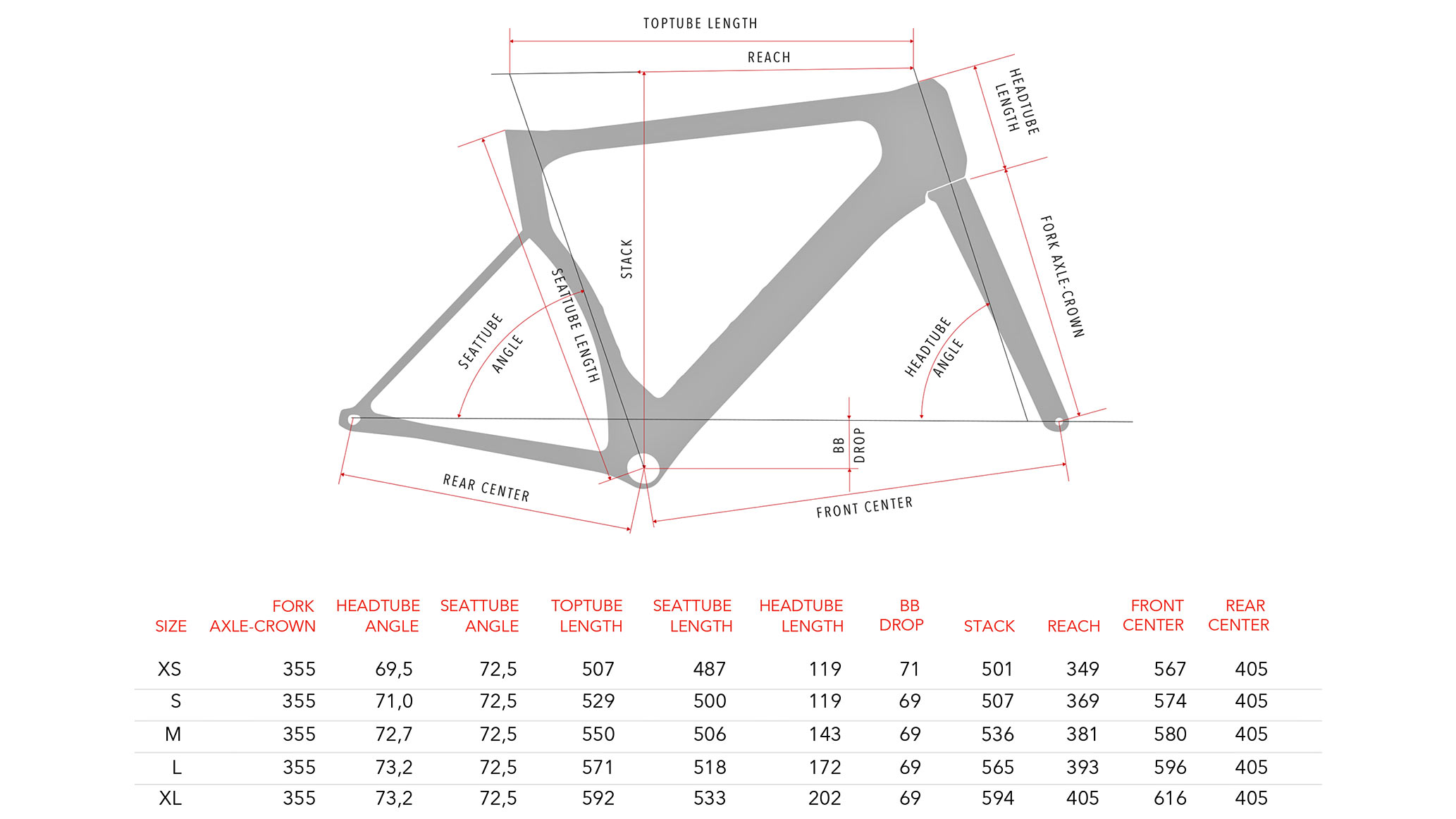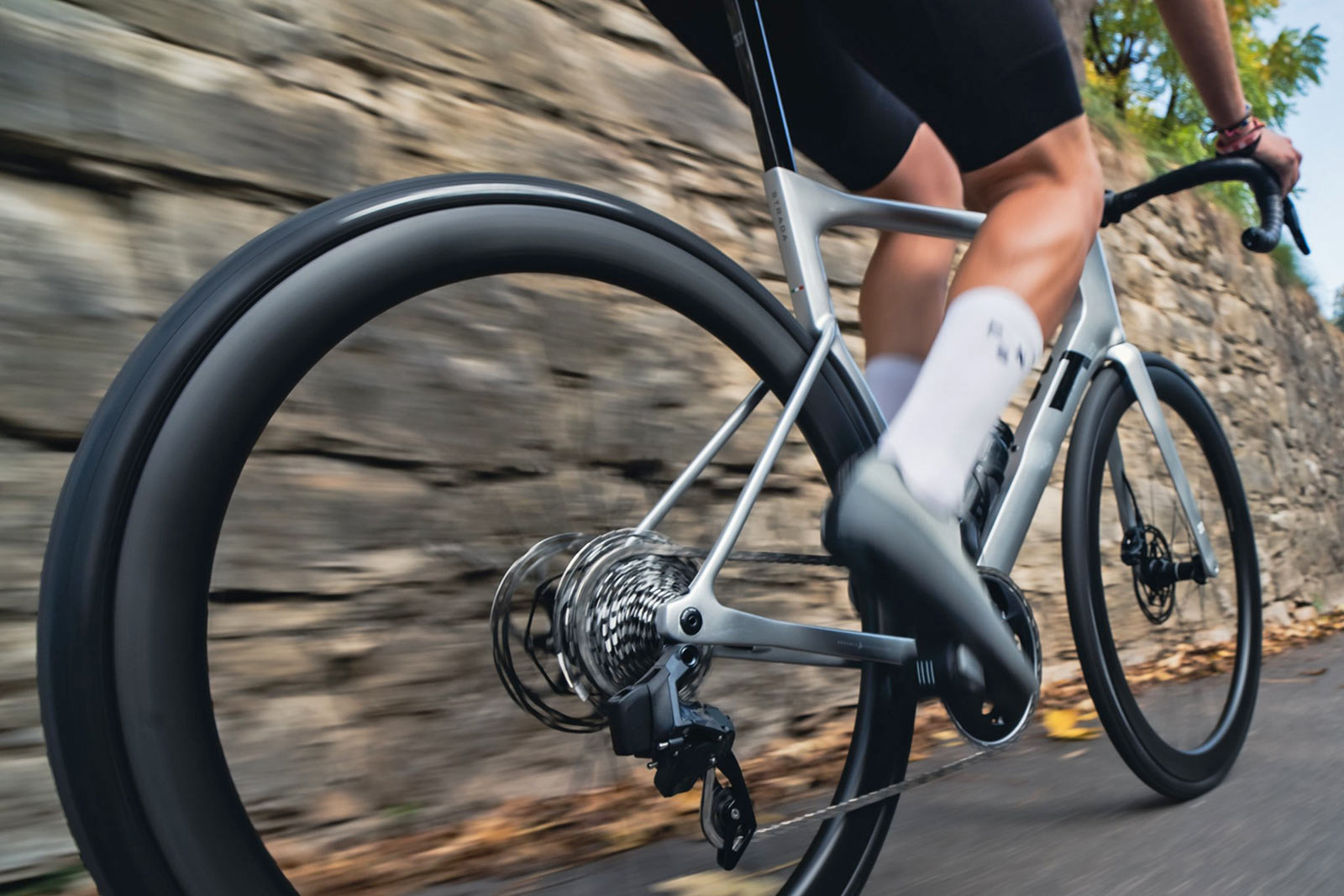The new 3T Strada aero road bike looks a lot like the previous version, except for one small but crucial difference – no visible external cables. And that’s actually kind of a big deal, as 3T had long been a holdout with an external routing port just behind the headset. So, demonstrating that they’ve come up with a solution for their aero road bike suggests that a similar setup for their gravel bikes isn’t far behind…
Updated 3T Strada road bike integrated
3T says a major driver for updating the original into the New Strada aero road bike was the relaxed UCI regulation that now allows for deeper tubing profiles and improved aerodynamics. And the new bike does sport a noticeably deeper & more bulbous hourglass headtube to eke out those extra free watts. But it still is the fully internal cable routing that most stands out.
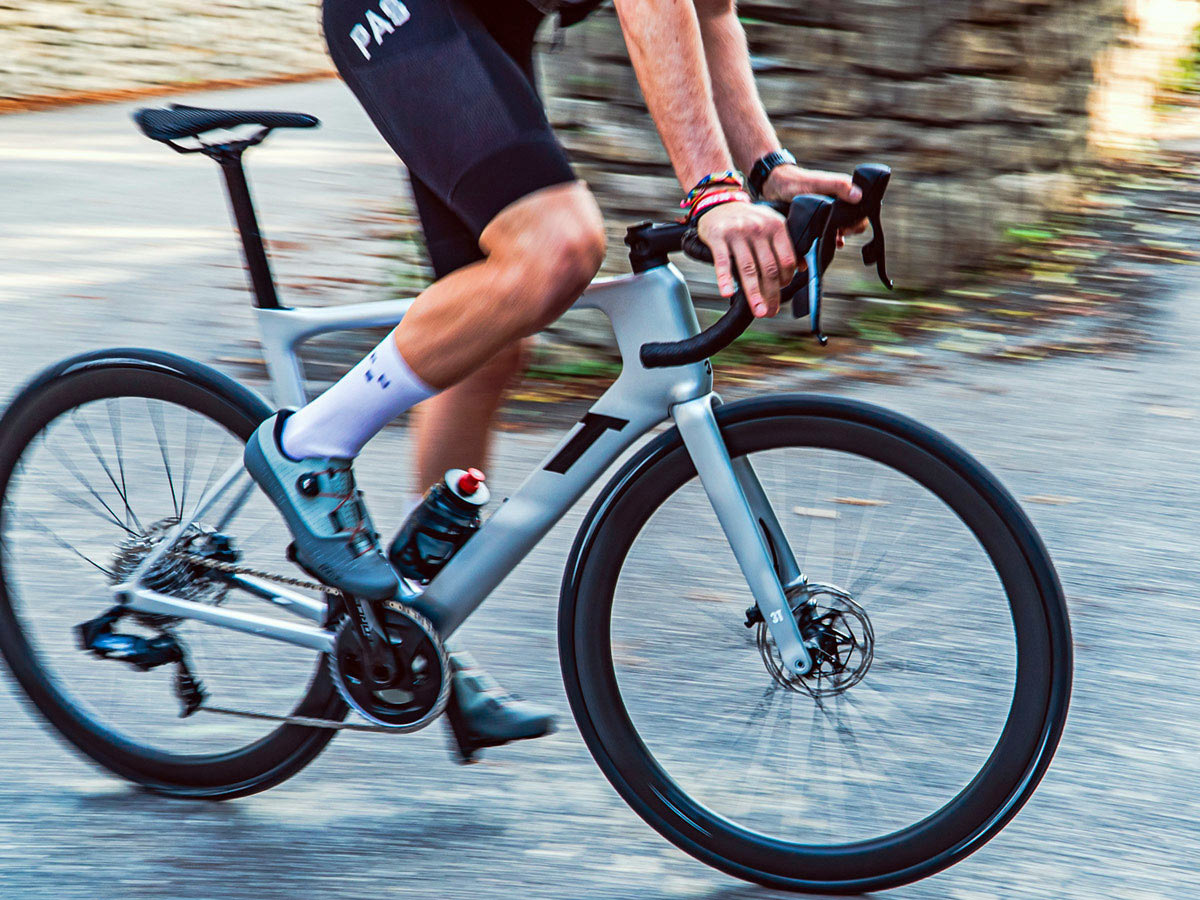
3T set out to achieve a few key points in the evolution of their Strada:
- improve the bike’s aerodynamics taking full advantage of the updated UCI regulations
- maintain the rider comfort of the original
- move all cables internal to reduce drag while keeping a narrow frontal area and retaining cockpit adjustability
- refine tire and saddle compatibility
- and ultimately bring it all together to make the bike faster overall
Aerodynamic, Stiffer & Comfortable
The 3T Strada already pushed the envelope in many places regarding deep aero tube shape. But now with relaxed UCI rules, 3T were able to extend the web off the back of the headtube, connecting the top & downtubes, while also bulging a nose cone forward in front of the steerer tube to significantly improve the aero profile of the leading edge of the frame.
The aero-optimized “speed zone” front end could get even stiffer than before, while the rear “comfort zone” still benefits from the vertical flex in the tiny seatstays and curved seattube to filter out vibration before it makes it through the saddle to the rider.
Making Cable Integration Work for 3T
Design engineer Gerard Vroomen says 3T “always loved the concept of fully internal cable routing but hated the execution“. And so they were resistant to integrating into an oversized headtube just to hide the cables for a couple of watts saved, usually sacrificing adjustability & serviceability at the same time as making the front end of the bike wider, too.
So, 3T kept the same narrow headtube, and the same 42mm outer upper & 47mm lower headset bearing dimensions that they had used on their narrower 1 1/4″ tapered steerer. But now give the Strada a full 1.5″ tapered steerer! They say that yields a headtube (and critical frontal area) at points 1cm narrower than bikes with the 52mm bearing that’s most used for a 1.5” headset – a significant extra beyond the width of the cables.
To make it work, 3T used a thinner MiniMax bearing with smaller balls inside (like on the gravel RaceMax) to allow for extra space between the 1 1/8″ upper section of the carbon steerer tube and the inner race of the top bearing. And to have a smaller outer width of the headtube, still with a 1.5″ diameter steerer at the crown inside. That gave room for a bigger compression ring that has a cutout to guide the cables between the front of the steerer and the inside of the thin bearing.
The slight hourglass headtube shape stays narrower in its middle where there is presumably sufficient internal space for the cables to pass around the middle of the steerer.
Maintaining adjustability came by sticking with a conventional 2-piece cockpit. 3T tweaked their alloy stem into the new Apto Integrale with a hole for cables in front of the steerer clamp and integrated steerer spacers for finish off the clean look. The Apto Integrale stem works with 3T’s Superergo and Aeroflux bars (or pretty much any other 31.8mm bar with a large routing port on the inside of the stem clamping area.
So while initial setup will be more complicated – and will necessitate trimming hoses to length, completely rerouting the lines, and bleeding brakes for a bar width or stem length change – riders still get full cockpit adjustability, and most will only have to adjust sizing for the first build.
The only real loss in all of the internal routing decision is that it is compatible only with electronic shift drivetrains (1x or 2x)… sorry Campy 13-speed fans, guess you’ll have to wait for Ekar EPS if you can’t afford Super Record EPS 12 now! But with electronic Shimano groups down to 105 Di2 & SRAM down to Rival AXS, 3T is fine with that compromise.
Added Tech Benefits
The final remaining gains are incremental. 3T says the new fork improves fork tire clearance slightly, but it still is officially the same 30mm actual width as before, just with a bit more room for error to better match the rear end.
The new Strada also shifts to a standard Ritchey saddle rail clamp atop the new Strada seatpost for easier usability and compatibility with all saddles – round or oval rails.
3T New Strada ICR – Pricing & Availability
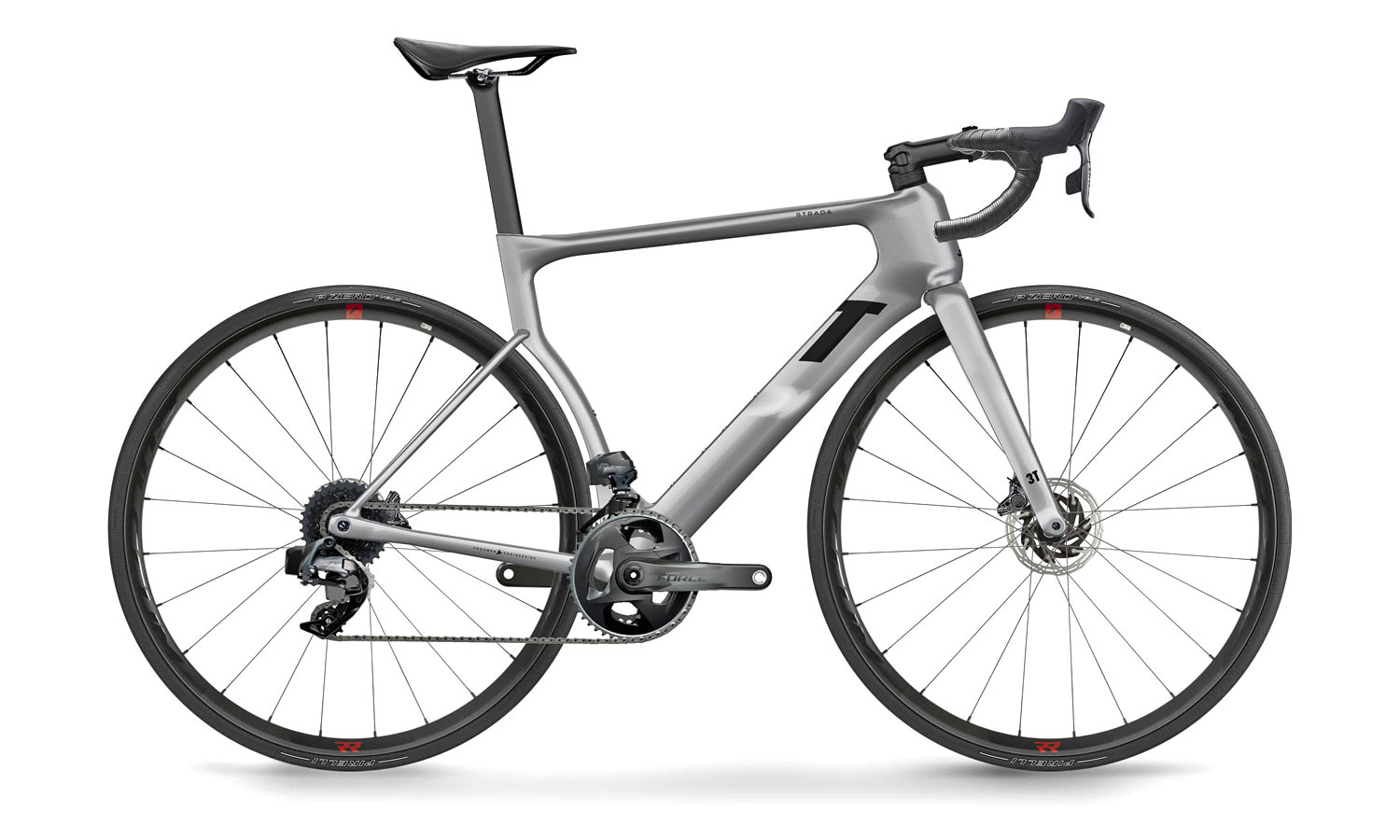
The new 3T Strada is available from today in five sizes (ZS-XL) only in limited quantities a Force AXS 2x build for 6200€ with carbon cockpit & alloy Fulcrum wheels (upgradable to aero carbon). Three more complete SRAM builds with Rival AXS XPLR 1x, Rival AXS 2x & Red AXS 2x will come later, plus a separate frameset at some point in the future, too.
As for a gravel Exploro RaceMax with internal routing, who knows how much longer we’ll have to wait?
